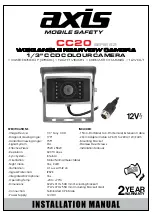
3
51
50
➀
Press the “ MENU/EXE” button to display the
menu on the LCD monitor.
➁
Use “
d
” and “
c
” on the 4-direction button to
select the menu setting.
➂
Use “
a
” and “
b
” on the 4-direction button to
change the setting.
➃
Press the “ MENU/EXE” button to confirm the
setting.
●
!
The available menu settings vary depending on the
photography mode. (
To move to another menu page, press “
d
” or
“
c
” on the 4-direction button for the arrows in
the menu (“
” or “
”)
1
2
PHOTOGRAPHY MENU
SETTING THE BRIGHTNESS (EXPOSURE COMPENSATION)
PHOTOGRAPHY MENU
You can set the brightness when the
photography mode is set to “
4
”.
Use the Brightness setting to obtain the optimum
image brightness (exposure) when the subject is
much brighter or darker than the background.
●
There are 11 compensation levels (–1.5 to 1.5
EV in approx. 0.3 EV increments). See P.105
for a definition of EV.
◆
Subjects for Which Exposure
Adjustment is Particularly Effective
◆
Positive (+) Compensation
●
Copying of printed text (black characters
on white paper) (
+
1.5 EV)
●
Backlit portraits (
+
0.6 to
+
1.5 EV)
●
Very bright scenes (such as snowfields)
and highly reflective subjects (
+
0.9 EV)
●
Shots made up predominantly of sky.
(
+
0.9 EV)
Negative (–) Compensation
●
Spotlit subjects, particularly against dark
backgrounds (–0.6 EV)
●
Copying of printed text (white characters
on black paper) (–0.6 EV)
●
Scenes with low reflectivity, such as
shots of pine trees or dark foliage (–0.6
EV)
✽
Settings given in parentheses are a general
guide.
●
!
The Brightness setting is disabled in the following
situations:
·
When the flash is used in Auto or Red-eye
Reduction mode
·
When dark scenes are shot in Forced Flash mode
1
●
➀
●
➁
●
➃
●
➂
,,
















































